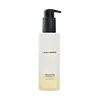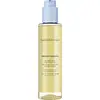What's inside
What's inside
 Key Ingredients
Key Ingredients

 Benefits
Benefits

 Concerns
Concerns

 Ingredients Side-by-side
Ingredients Side-by-side

Carthamus Tinctorius Seed Oil
MaskingPentaerythrityl Tetraethylhexanoate
EmollientPentaerythrityl Tetraisostearate
EmollientC9-12 Alkane
SolventDiisostearyl Malate
EmollientSqualane
EmollientSorbeth-30 Tetraisostearate
EmulsifyingOryza Sativa Bran Extract
Skin ConditioningCoco-Caprylate/Caprate
EmollientHelianthus Annuus Extract
EmollientTocopherol
AntioxidantRosmarinus Officinalis Leaf Extract
AntimicrobialBorago Officinalis Seed Oil
EmollientMoringa Oleifera Seed Oil
EmollientSea Water
HumectantMacadamia Ternifolia Seed Oil
EmollientGlycerin
HumectantAleurites Moluccanus Seed Oil
Skin ConditioningRhus Verniciflua Peel Wax
Rosa Gallica Flower Extract
AstringentPorphyridium Cruentum Extract
Skin ConditioningRosa Damascena Flower Oil
MaskingWater
Skin ConditioningParfum
MaskingPropanediol
SolventPhenoxyethanol
PreservativePotassium Sorbate
PreservativeSorbic Acid
PreservativeCarthamus Tinctorius Seed Oil, Pentaerythrityl Tetraethylhexanoate, Pentaerythrityl Tetraisostearate, C9-12 Alkane, Diisostearyl Malate, Squalane, Sorbeth-30 Tetraisostearate, Oryza Sativa Bran Extract, Coco-Caprylate/Caprate, Helianthus Annuus Extract, Tocopherol, Rosmarinus Officinalis Leaf Extract, Borago Officinalis Seed Oil, Moringa Oleifera Seed Oil, Sea Water, Macadamia Ternifolia Seed Oil, Glycerin, Aleurites Moluccanus Seed Oil, Rhus Verniciflua Peel Wax, Rosa Gallica Flower Extract, Porphyridium Cruentum Extract, Rosa Damascena Flower Oil, Water, Parfum, Propanediol, Phenoxyethanol, Potassium Sorbate, Sorbic Acid
Carthamus Tinctorius Seed Oil
MaskingC9-12 Alkane
SolventPentaerythrityl Tetraethylhexanoate
EmollientSorbeth-30 Tetraisostearate
EmulsifyingHydrogenated Polydecene
EmollientSqualane
EmollientCoco-Caprylate/Caprate
EmollientWater
Skin ConditioningTocopherol
AntioxidantBorago Officinalis Seed Oil
EmollientCucumis Sativus Seed Oil
EmollientHelianthus Annuus Seed Oil
EmollientSimmondsia Chinensis Seed Oil
EmollientPunica Granatum Flower Extract
Skin ConditioningSea Salt
AbrasiveParfum
MaskingLinalool
PerfumingLimonene
PerfumingPhenoxyethanol
PreservativeCarthamus Tinctorius Seed Oil, C9-12 Alkane, Pentaerythrityl Tetraethylhexanoate, Sorbeth-30 Tetraisostearate, Hydrogenated Polydecene, Squalane, Coco-Caprylate/Caprate, Water, Tocopherol, Borago Officinalis Seed Oil, Cucumis Sativus Seed Oil, Helianthus Annuus Seed Oil, Simmondsia Chinensis Seed Oil, Punica Granatum Flower Extract, Sea Salt, Parfum, Linalool, Limonene, Phenoxyethanol
Ingredients Explained
These ingredients are found in both products.
Ingredients higher up in an ingredient list are typically present in a larger amount.
Borago Officinalis Seed Oil is from the seeds of the starflower plant. This plant grows primarily in Europe.
This oil does not have a scent. It contains fatty acids such as linolenic acid. These fatty acids help keep skin hydrated.
Borago Officinalis Seed Oil is an antioxidant. Antioxidants help fight free-radicals. Free-radicals are molecules that may damage your skin cells.
Learn more about Borago Officinalis Seed OilC9-12 Alkane is synethically created using alkanes, or paraffins. It is added to products as a solvent. This means its main purpose is to help dissolve ingredients and create even texture.
Carthamus tinctorius seed oil comes from safflower, one of humanity's oldest crops.
Safflower seed oil contains a high percentage of linoleic acid and oleic acid. It also contains Vitamin E. These three components are effective moisturizers.
Vitamin E helps nourish your skin's lipid barrier. It is also a potent antioxidant. Antioxidants help fight free-radical molecules, or unstable molecules that may damage your skin cells.
Due to its high fatty acid content, this ingredient may not be malassezia folliculitis safe.
Thoughout history, safflower has been used for dying fabrics and in food as a saffron substitute.
Learn more about Carthamus Tinctorius Seed OilCoco-Caprylate/Caprate is created from fatty coconut alcohol, caprylic acid, and capric acid.
It is a lightweight emollient. Emollients create a thin barrier on the skin to trap moisture in. This helps keep your skin hydrated and soft.
Once applied, Coco-Caprylate/Caprate is absorbed quickly and leaves a silky feel.
Coco-Caprylate/Caprate may not be fungal acne safe.
Learn more about Coco-Caprylate/CaprateParfum is a catch-all term for an ingredient or more that is used to give a scent to products.
Also called "fragrance", this ingredient can be a blend of hundreds of chemicals or plant oils. This means every product with "fragrance" or "parfum" in the ingredients list is a different mixture.
For instance, Habanolide is a proprietary trade name for a specific aroma chemical. When used as a fragrance ingredient in cosmetics, most aroma chemicals fall under the broad labeling category of “FRAGRANCE” or “PARFUM” according to EU and US regulations.
The term 'parfum' or 'fragrance' is not regulated in many countries. In many cases, it is up to the brand to define this term.
For instance, many brands choose to label themselves as "fragrance-free" because they are not using synthetic fragrances. However, their products may still contain ingredients such as essential oils that are considered a fragrance by INCI standards.
One example is Calendula flower extract. Calendula is an essential oil that still imparts a scent or 'fragrance'.
Depending on the blend, the ingredients in the mixture can cause allergies and sensitivities on the skin. Some ingredients that are known EU allergens include linalool and citronellol.
Parfum can also be used to mask or cover an unpleasant scent.
The bottom line is: not all fragrances/parfum/ingredients are created equally. If you are worried about fragrances, we recommend taking a closer look at an ingredient. And of course, we always recommend speaking with a professional.
Learn more about ParfumPentaerythrityl Tetraethylhexanoate is an emollient that helps make your skin smooth and hydrated. It specializes in creating a non-oily and "wet" feeling on skin.
This ingredient comes from isostearic acid, a saturated fatty acid. It is a synthetic ingredient.
Phenoxyethanol is a preservative that has germicide, antimicrobial, and aromatic properties. Studies show that phenoxyethanol can prevent microbial growth. By itself, it has a scent that is similar to that of a rose.
It's often used in formulations along with Caprylyl Glycol to preserve the shelf life of products.
Sorbeth-30 Tetraisostearate isn't fungal acne safe.
Squalane is an emollient that helps the skin hold onto moisture. It's an oily liquid that occurs naturally in certain types of fish and plant oils.
Because squalane boosts hydration in the skin, it also comes with plenty of benefits: it is an antioxidant and can help fight free radicals and skin damage. Squalane is also found to have a detoxifying effect when applied.
Squalane comes from squalene, which occurs naturally within the sebum of our skin. It is one of the oils our skin produces to keep itself hydrated. Squalane is the hydrogenated version of squalene and has a longer shelf life.
Research shows that squalane is non-irritating (even at 100% concentration).
In general, it's a fantastic ingredient. It does a great job at hydrating the skin, and it's suitable for those with sensitive skin.
The source of squalane may impact malassezia / fungal acne. This is because olive oil derived squalane can contain impurities such as fatty acids and plant waxes. Sugarcane derived squalane is recommended for anyone with malassezia concerns.
Is squalane vegan?
This depends on the source. Squalane can be derived from both plants and animals. Most squalane used in skincare comes from plants.
Please note: the source of squalane is only known if disclosed by the brand. We recommend reaching out to the brand if you have any questions about their squalane.
Read more about squalene with an "e".
Is squalane an oil?
Squalane is often called an oil, but it’s technically not; it’s a hydrocarbon, meaning it’s only made of carbon and hydrogen, unlike true oils which are triglycerides made of fatty acids and glycerol.
The term “oil-free” isn’t regulated, so companies can define it however they want. Some exclude all oils, while others just avoid mineral oil or comedogenic oils.
While some people avoid oils thinking they cause breakouts, the right kind of oil (or oil-like ingredient like squalane) can actually help balance and hydrate your skin. It’s worth testing out simple oils or squalane to see what works best for your skin.
Learn more about SqualaneTocopherol (also known as Vitamin E) is a common antioxidant used to help protect the skin from free-radicals and strengthen the skin barrier. It's also fat soluble - this means our skin is great at absorbing it.
Vitamin E also helps keep your natural skin lipids healthy. Your lipid skin barrier naturally consists of lipids, ceramides, and fatty acids. Vitamin E offers extra protection for your skin’s lipid barrier, keeping your skin healthy and nourished.
Another benefit is a bit of UV protection. Vitamin E helps reduce the damage caused by UVB rays. (It should not replace your sunscreen). Combining it with Vitamin C can decrease sunburned cells and hyperpigmentation after UV exposure.
You might have noticed Vitamin E + C often paired together. This is because it is great at stabilizing Vitamin C. Using the two together helps increase the effectiveness of both ingredients.
There are often claims that Vitamin E can reduce/prevent scarring, but these claims haven't been confirmed by scientific research.
Learn more about TocopherolWater. It's the most common cosmetic ingredient of all. You'll usually see it at the top of ingredient lists, meaning that it makes up the largest part of the product.
So why is it so popular? Water most often acts as a solvent - this means that it helps dissolve other ingredients into the formulation.
You'll also recognize water as that liquid we all need to stay alive. If you see this, drink a glass of water. Stay hydrated!
Learn more about Water